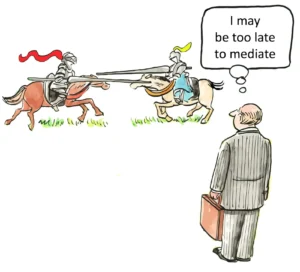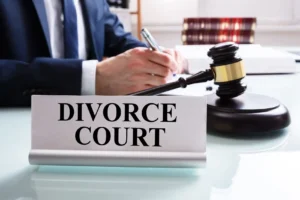Writ of Coram Nobis: Correcting Errors After Conviction
The writ of coram nobis is an extraordinary legal remedy that allows a court to correct fundamental errors in a criminal conviction after the defendant has completed their sentence. This ancient writ, with roots in English common law, has evolved into a crucial tool for addressing miscarriages of justice in the American legal system. The writ of coram nobis serves as a last resort for individuals seeking to overturn a conviction based on errors of fact or legal errors that were not apparent during the original proceedings.
The purpose of a coram nobis petition is to bring to the court’s attention facts that, had they been known at the time of trial, would have prevented the conviction. Unlike a direct appeal or habeas corpus petition, which are typically filed while a defendant is still in custody, a writ of coram nobis can be filed after the sentence has been served and direct appeals have been exhausted. This makes it a unique and powerful instrument for those who have discovered new evidence or realized the impact of constitutional violations long after their case has concluded.
In the federal court system, the authority for coram nobis relief stems from the All Writs Act, which grants federal courts the power to issue “all writs necessary or appropriate in aid of their respective jurisdictions.” The U.S. Supreme Court affirmed the continued validity of coram nobis in United States v. Morgan (1954), establishing it as a means to challenge federal convictions. State courts vary in their recognition and application of coram nobis, with some states providing similar relief under different names or procedures.
The eligibility criteria for filing a writ of coram nobis are stringent, reflecting its nature as an extraordinary remedy. Petitioners must demonstrate that:
- There are errors of fact of a fundamental nature.
- The errors were not previously presented to the court.
- The errors would have prevented the conviction had they been known at the time.
- There are valid reasons for not attacking the conviction earlier.
- The consequences of the conviction continue to persist.
These requirements set a high bar for relief, ensuring that coram nobis remains a remedy of last resort and is not used to relitigate issues that could have been addressed through other means.
The filing process for a writ of coram nobis typically involves submitting a petition to the court that entered the original judgment of conviction. The petition must clearly state the grounds for relief and be accompanied by supporting evidence. This evidence may include newly discovered facts, proof of ineffective assistance of counsel, or demonstrations of constitutional violations that were not apparent during the original proceedings.
One of the most common grounds for seeking coram nobis relief is the discovery of new evidence that was not available at the time of trial. This might include DNA evidence that exonerates the defendant, proof of prosecutorial misconduct, or witness recantations. The new evidence must be material to the case and of such significance that it would likely have changed the outcome of the trial had it been presented.
Another frequent basis for coram nobis petitions is ineffective assistance of counsel. To succeed on this ground, petitioners must show that their attorney’s performance fell below an objective standard of reasonableness and that this deficient performance prejudiced the defense to such an extent that it calls the fairness of the entire proceeding into question.
Constitutional violations that were not apparent or addressable during the original proceedings can also form the basis of a coram nobis petition. For example, if it is discovered that the prosecution withheld exculpatory evidence in violation of Brady v. Maryland, or if there was juror misconduct that compromised the defendant’s right to a fair trial, these issues could potentially be raised through a coram nobis petition.
The standard of review for coram nobis petitions is generally quite strict. Courts are reluctant to disturb final judgments, especially after a significant passage of time. Petitioners bear the burden of proving that the alleged errors are of such fundamental character as to render the proceeding itself irregular and invalid. This high standard reflects the balance between finality in criminal proceedings and the need to correct egregious errors that result in continued injustice.
One of the key advantages of coram nobis over other forms of post-conviction relief is its availability even after the completion of a sentence. This makes it particularly valuable for individuals facing collateral consequences of a conviction, such as deportation, loss of professional licenses, or restrictions on civil rights. In an era where criminal records can have far-reaching impacts on employment, housing, and other aspects of life, the ability to challenge wrongful convictions long after the fact is crucial.
The timeliness of a coram nobis petition is a critical factor in its consideration. While there is no strict time limit for filing, petitioners must explain any delay in seeking relief. Courts may deny petitions if they find that the petitioner unreasonably delayed in bringing the claim, especially if the delay has prejudiced the government’s ability to respond to the allegations.
In the context of federal convictions, coram nobis has been used to challenge a wide range of issues, including:
- Convictions obtained through coerced guilty pleas
- Cases where the defendant was not properly advised of the consequences of a plea
- Situations where the defendant was convicted under a statute later found to be unconstitutional
- Instances of egregious prosecutorial misconduct
The scope of coram nobis in state courts varies significantly. Some states have abolished the writ entirely, while others have replaced it with statutory remedies that serve similar functions. In states where coram nobis remains available, its application may be limited to specific types of cases or errors.
The success rate for coram nobis petitions is generally low, reflecting the extraordinary nature of the remedy and the high standards for granting relief. However, when successful, coram nobis can have profound implications, not only for the individual petitioner but also for the integrity of the justice system as a whole.
One notable example of a successful coram nobis petition is the case of Korematsu v. United States. Fred Korematsu, who had been convicted of violating exclusion orders during World War II that led to the internment of Japanese Americans, had his conviction vacated through a coram nobis petition in 1983. This case highlighted the potential of coram nobis to address historical injustices and vindicate constitutional rights long after the fact.
The relationship between coram nobis and other post-conviction remedies is complex. While habeas corpus is often seen as the primary means of challenging unlawful detention, coram nobis serves a distinct role in addressing errors after a sentence has been completed. Understanding the interplay between these remedies is crucial for practitioners and petitioners alike.
Procedural considerations in coram nobis proceedings can be intricate. Unlike in direct appeals, there is no automatic right to counsel in coram nobis cases. This can present significant challenges for petitioners, who must navigate complex legal issues without the benefit of legal representation. Some courts may appoint counsel in coram nobis cases that present particularly compelling claims or complex legal issues, but this is not guaranteed.
The evidentiary standards in coram nobis proceedings can also differ from those in other types of post-conviction proceedings. While new evidence is often central to coram nobis claims, courts may be more restrictive in what they will consider, given the passage of time and the presumption of finality that attaches to criminal judgments.
The impact of coram nobis extends beyond individual cases to shape broader discussions about criminal justice reform. The existence of this remedy acknowledges that the legal system is not infallible and that mechanisms must exist to correct even the most entrenched errors. As such, coram nobis plays a role in ongoing debates about the balance between finality and fairness in criminal proceedings.
The future of coram nobis in American jurisprudence remains a subject of debate. Some legal scholars argue for an expansion of the writ to address systemic issues in the criminal justice system, while others contend that its extraordinary nature should be preserved by maintaining strict limitations on its use. As the legal landscape evolves, particularly in areas such as forensic science and digital evidence, the role of coram nobis may continue to adapt.
International perspectives on remedies similar to coram nobis can provide valuable insights. Many countries have developed mechanisms for addressing wrongful convictions after the completion of sentences, though the specific procedures and standards vary widely. Comparative analysis of these approaches can inform discussions about potential reforms to the American system.
The intersection of coram nobis with emerging technologies presents both opportunities and challenges. Advances in forensic science, particularly in DNA analysis, have opened new avenues for challenging convictions based on outdated or flawed evidence. However, the rapid pace of technological change also raises questions about how courts should evaluate claims based on evolving scientific understanding.
Ethical considerations play a significant role in coram nobis proceedings. Attorneys representing petitioners must navigate complex issues of client confidentiality, especially when new evidence implicates others or reveals previously undisclosed information. Prosecutors faced with coram nobis petitions must balance their duty to uphold convictions with their ethical obligation to seek justice and correct errors.
The psychological impact of seeking coram nobis relief can be profound for petitioners. The process of revisiting a conviction, often years or decades after the fact, can be emotionally taxing. For those who succeed in having their convictions vacated, the vindication can be life-changing, but it may also come with challenges in reintegrating into society and rebuilding lives disrupted by wrongful convictions.
Public perception of coram nobis and similar remedies can influence their effectiveness and availability. High-profile cases where coram nobis has been used to overturn convictions can raise awareness of the remedy and potentially lead to increased use. Conversely, concerns about finality and resource allocation may create pressure to limit access to such extraordinary remedies.
The role of advocacy organizations in coram nobis cases has become increasingly significant. Groups focused on wrongful convictions and criminal justice reform often provide resources and support to individuals seeking coram nobis relief. These organizations play a crucial role in identifying potential cases, conducting investigations, and raising public awareness about the importance of post-conviction remedies.
As the legal system continues to grapple with issues of racial and economic disparities in criminal justice, coram nobis may take on new significance as a tool for addressing systemic biases. Cases where coram nobis has been used to overturn convictions tainted by discriminatory practices or policies highlight its potential as a mechanism for broader reform.
The intersection of coram nobis with immigration law has become particularly salient in recent years. For non-citizens, the consequences of a criminal conviction can include deportation, even years after the completion of a sentence. Coram nobis has emerged as a critical tool for challenging convictions that carry immigration consequences, allowing individuals to potentially avoid removal based on old convictions that were fundamentally flawed.
The procedural nuances of coram nobis proceedings can vary significantly between jurisdictions. Some courts have developed specific local rules or practices for handling coram nobis petitions, while others treat them similarly to other post-conviction motions. Understanding these procedural variations is crucial for practitioners and petitioners navigating the coram nobis process.
The role of appellate courts in coram nobis cases is complex. While the petition is typically filed with the court that entered the original judgment, appellate review of coram nobis decisions can involve intricate questions of jurisdiction and standard of review. The development of appellate jurisprudence on coram nobis has played a significant role in shaping the contours of this remedy.
As the legal system continues to evolve, the writ of coram nobis remains a vital, if rarely granted, remedy for addressing fundamental errors in criminal convictions. Its existence serves as a reminder of the ongoing commitment to justice and the recognition that even final judgments must sometimes yield to the imperative of correcting grave mistakes. For those who have exhausted all other avenues of relief, coram nobis stands as a last hope for vindication and a mechanism for ensuring that the legal system remains capable of self-correction, even in its most entrenched errors.




















